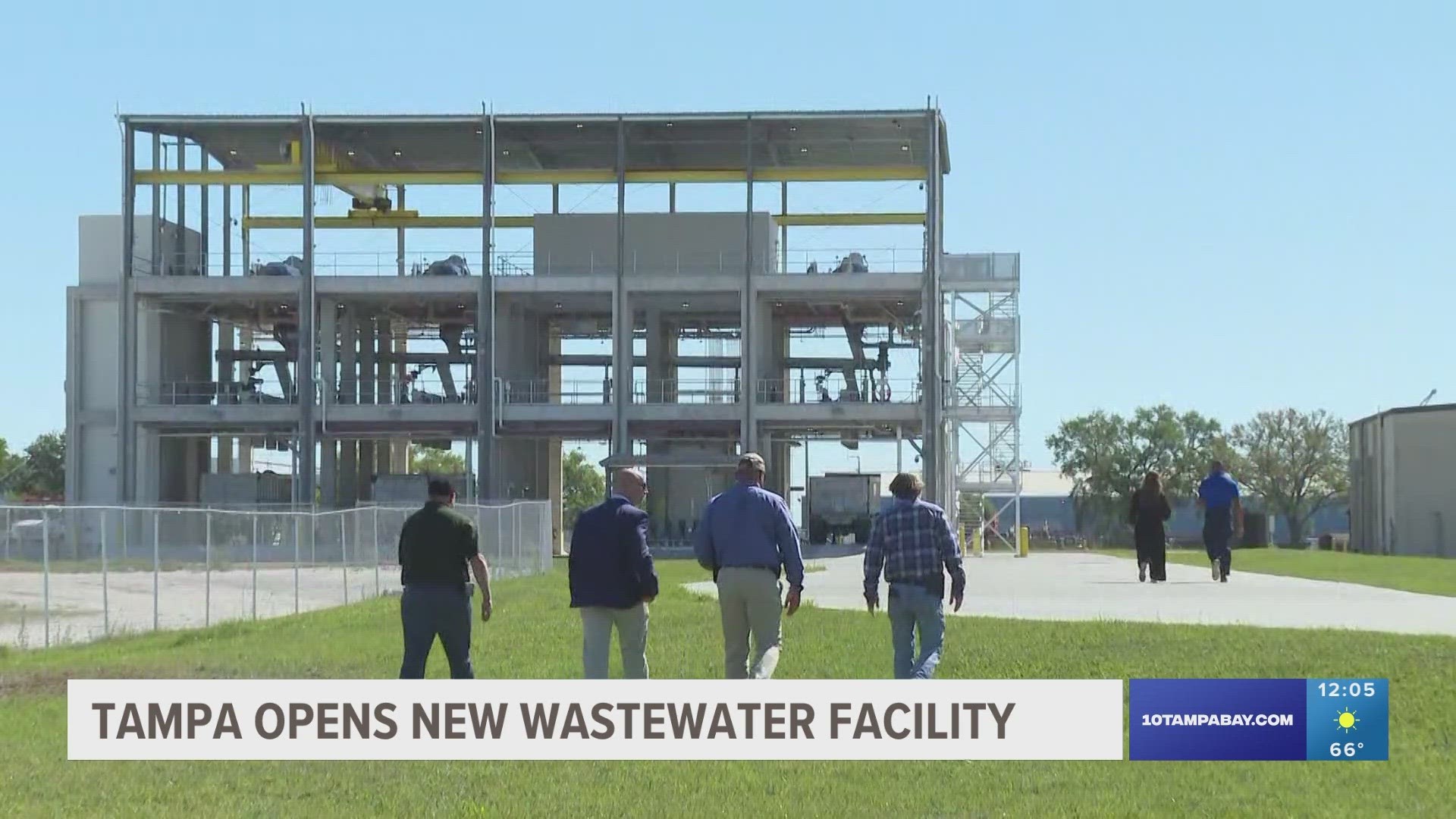TAMPA, Fla. — Tampa's wastewater system is getting a major investment with a new state-of-the-art facility that leaders say will save money and improve efficiency.
On Wednesday, Mayor Jane Castor and leaders of the Department of Wastewater unveiled the new Sludge Dewatering Building.
The three-story, 15,028-square-foot facility features new technology that performs the final treatment of biosolids, otherwise known as "sludge." Biosolids are treated and sent to EPA-approved sites where they are used for agricultural purposes instead of being placed in landfills.
"It acts as a soil amendment and fertilizer for them," Wastewater Director Eric Weiss said. "It also means they don't have to buy inorganic fertilizer or nutrients from some phosphate mine or pit. And for us, the city gets to reuse that, instead of going to a landfill."
With the new technology available, the Sludge Dewatering Building can remove more water and lower transportation funds. Leaders say the facility will save $500,000 yearly in operational costs.
"It's replacing aging assets and giving the city a sustainable process for many years into the future," Weiss said.
This new $31.5 million project is part of Tampa's $2.9 billion PIPES (Progressive Infrastructure Plan to Ensure Sustainability) Program. Since its launch, the program has made a schedule of gradual rate increases for water and wastewater services over the next 20 years, providing extra funding source for major infrastructure improvements.
"PIPES is a once-in-a-generation program that will transform our 100-year-old water and wastewater infrastructure so it can continue to service more than 700,000 people, and counting," Mayor Castor said in a statement. "Since 2019 we have made great progress, but the journey is just beginning. These infrastructure investments are critical for the health of our communities and environment."
Other projects through PIPES include the rehabilitation of the Main Pumping Station and High Purity Oxygen Reactors, along with the rehabilitation of Digester No. 7.
“Not only will these projects modernize our technology, they will also reduce the risks brought by storms,” Weiss said in a statement. “The plant is 10 feet above sea level and surrounded by water on three sides. Raising the electrical components will reduce vulnerability to extreme weather events and sea level rise.”
The Wastewater Department has invested over $461 million toward upgrading its infrastructure since the beginning of the PIPES program.

